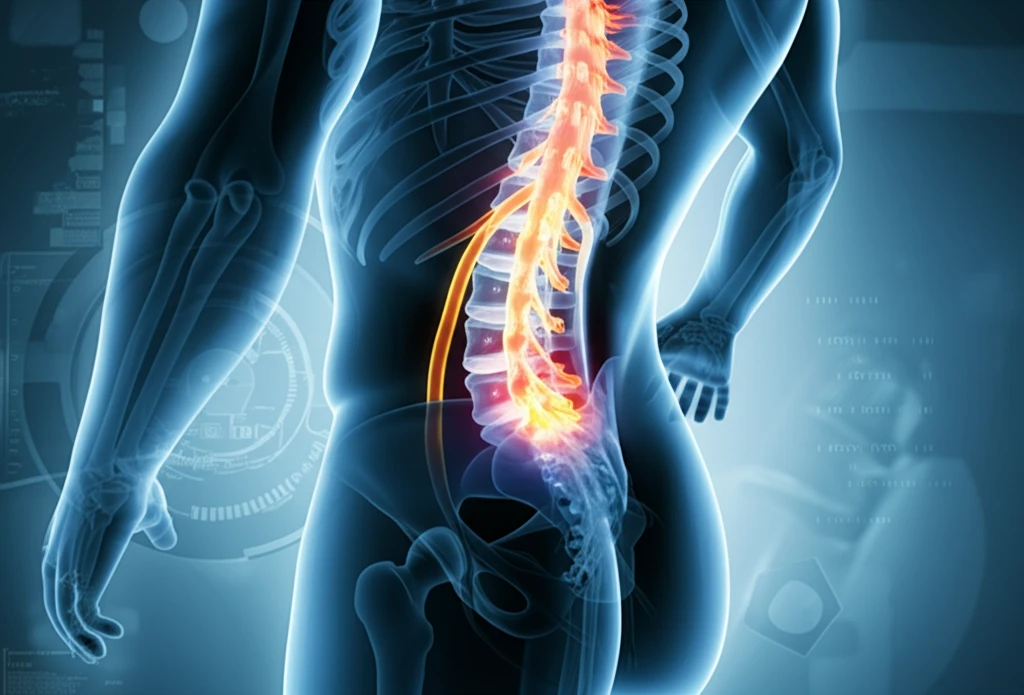
Single Epidural Injection: A Novel Approach to Relieve Neck and Back Pain Simultaneously?
"Discover how a single epidural injection, combined with a simple table tilt, could revolutionize pain management for cervical and lumbar radiculopathies."
Chronic neck and back pain affects a significant portion of the population, often stemming from radiculopathy caused by intervertebral disc issues. Traditionally, addressing radiculopathy at multiple levels requires multiple epidural steroid injections, but what if there was a way to manage pain in both the cervical and lumbar regions with just one shot?
A groundbreaking study explores the effectiveness of a single epidural injection combined with a simple table tilt technique to manage radiculopathies affecting both the neck and lower back. This approach aims to provide comprehensive pain relief without the need for multiple injections, potentially reducing discomfort and costs for patients.
This innovative method involves injecting a combination of local anesthetic, tramadol, and methylprednisolone into the lumbar epidural space, followed by tilting the patient on a table to facilitate the spread of the medication to the cervical region. The study assesses the outcomes and immediate complications of this single-injection technique, offering new hope for those suffering from combined cervical and lumbar radiculopathies.
How Does a Single Epidural Injection Work for Dual Pain Relief?

The study included 50 patients aged 35-65 years, all experiencing both cervical and lumbar radiculopathic pain. These patients underwent a single lumbar epidural injection containing a mix of local anesthetic, tramadol, and methylprednisolone while positioned on their side. After the injection, the table was tilted into the Trendelenburg position at a 25-degree angle for 10 minutes before returning the patient to a supine position. This process was repeated three times, with two weeks between each injection.
- Patient Selection: 50 patients with cervical and lumbar radiculopathy.
- Injection Composition: Local anesthetic, tramadol, and methylprednisolone.
- Positioning: Lateral position during injection, followed by Trendelenburg tilt.
- Tilt Angle: 25 degrees for 10 minutes.
- Repetition: Three injections, two weeks apart.
A Promising Alternative for Pain Management
This single-injection technique offers a potentially effective and less invasive alternative to traditional methods requiring multiple injections. By using a combination of medication and a simple table tilt, patients can experience significant pain relief in both the cervical and lumbar regions, improving their overall quality of life. This method could be a game-changer for managing combined radiculopathies, providing a more convenient and cost-effective solution.
